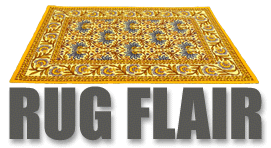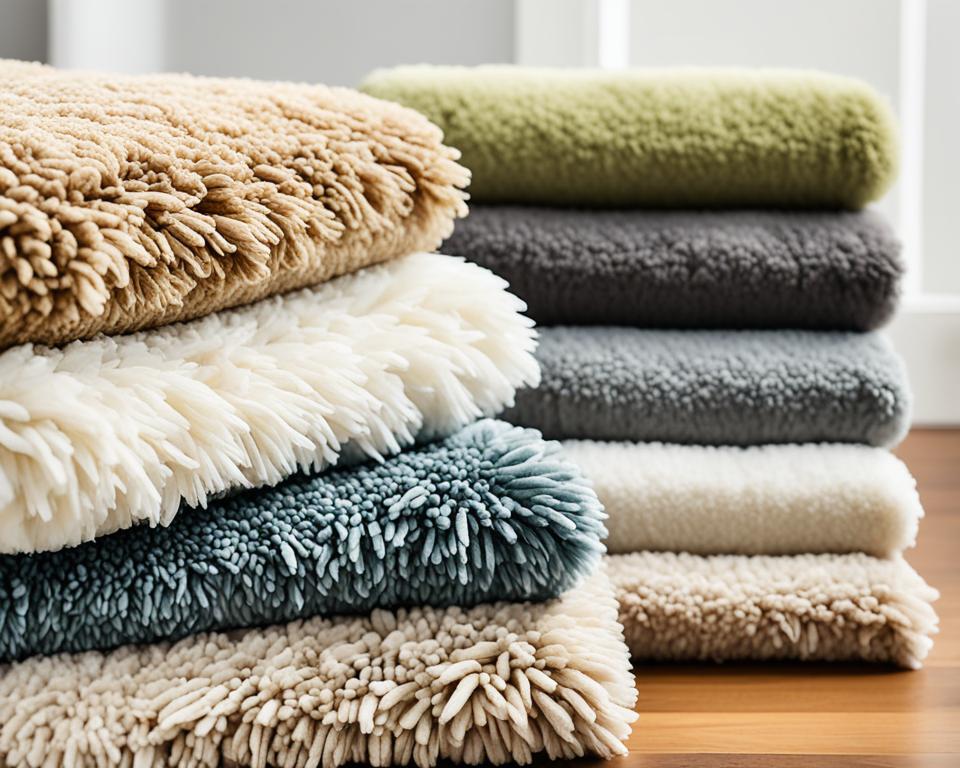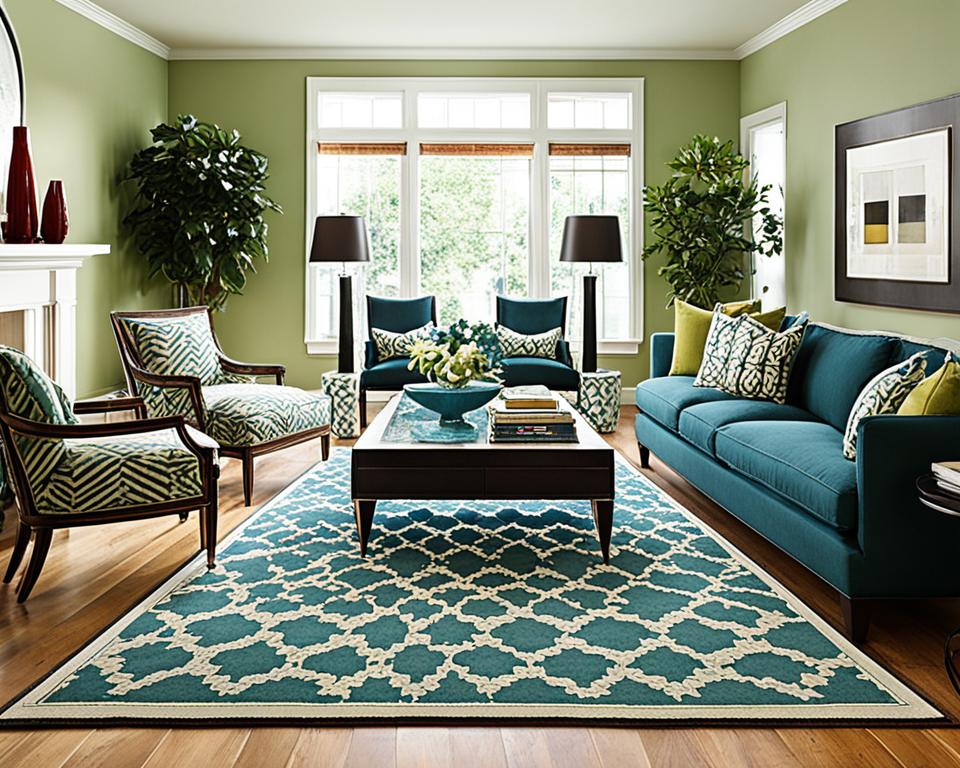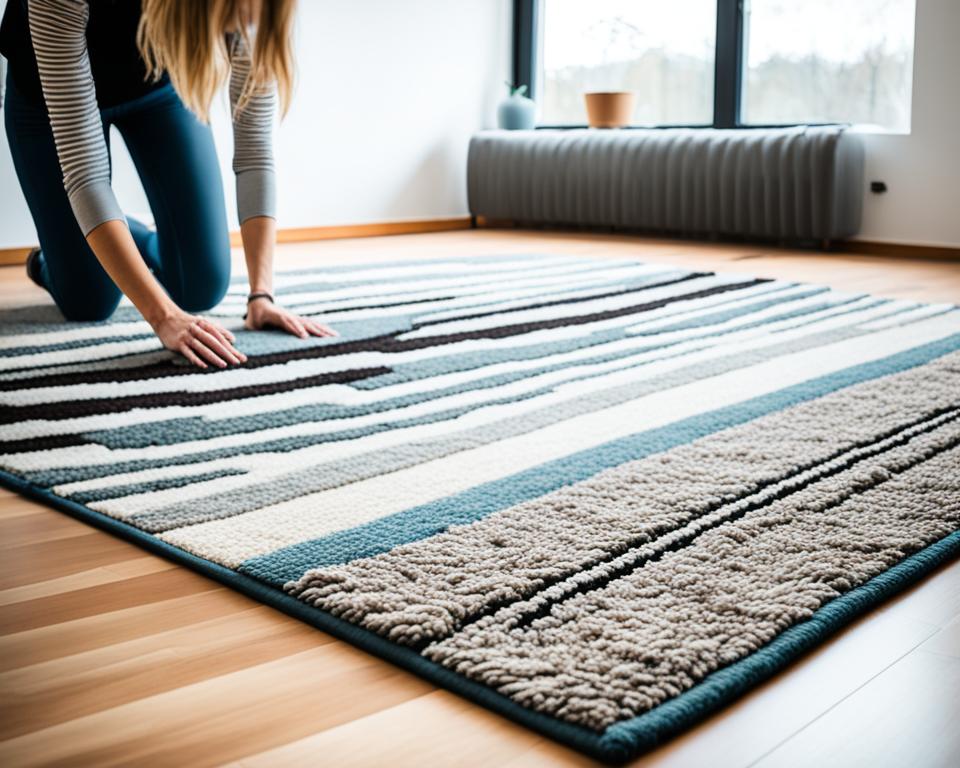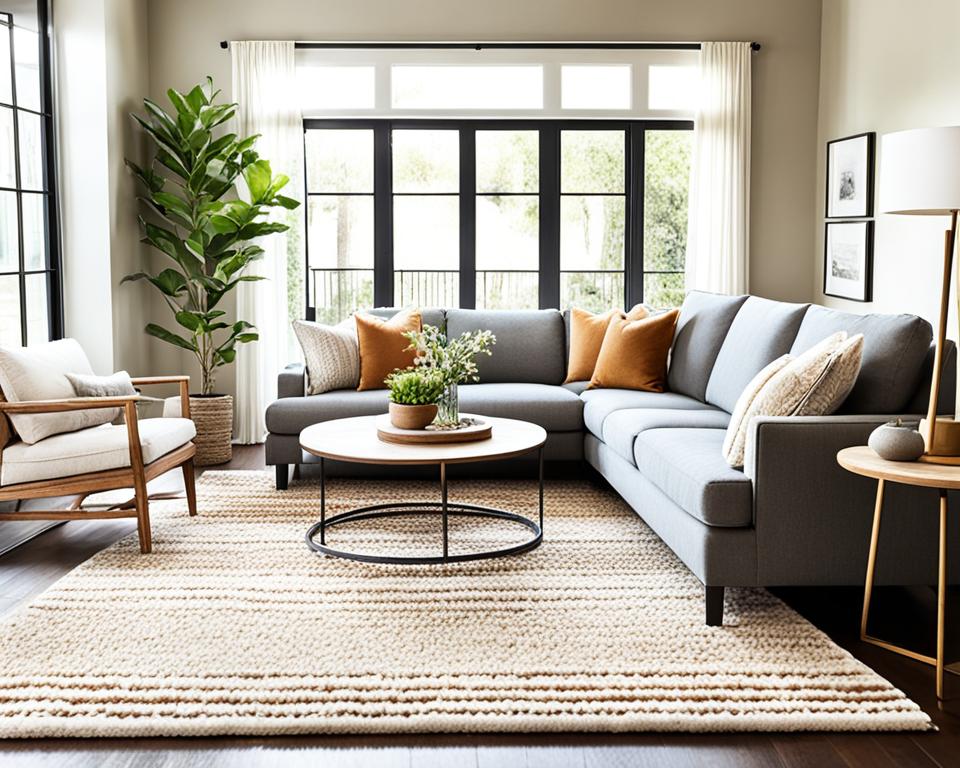Embarking on the journey of home redecoration invites the exciting task of selecting the best rug material to elevate your living space. Rugs are more than just floor coverings; they are a canvas upon which your room’s character and comfort are drawn. The key to finding the optimal rug material lies in understanding the distinct properties of each fabric, ensuring the choice you make is tailored to your lifestyle and decor scheme.
Whether your aim is to instill a sense of warmth with a plush texture underfoot or to embrace practicality with a durable walkway, balancing the aesthetic with the functional becomes simpler with the right insights. Delve into the world of superior rug materials, and discover how the finest rug material options can transform your home into a sanctuary that genuinely reflects your personal style and meets your everyday needs.
Key Takeaways
- Identify the best rug material based on room usage and foot traffic.
- Consider optimal rug material for each area to ensure durability and style.
- Discover superior rug materials that provide both aesthetic appeal and functionality.
- Explore a variety of finest rug material options tailored to specific needs.
- Learn the importance of material choice in achieving the desired ambiance for your home.
Understanding Rug Materials: Your Essential Primer
Choosing which rug material is best for your home can be a delightful puzzle. Your quest for the ideal rug fabric should be guided by the unique suite of advantages each material brings to your living space. In a sea of options, you’ll encounter natural fibers like wool, cotton, silk, jute, and sisal, each claiming its distinctive texture and level of sturdiness underfoot.
Synthetic fibers, including polypropylene and nylon, splash vibrancy and offer meticulous ease of care, which may prove to be the ultimate convenience for both indoor flair and outdoor living. If it’s a toss-up between the luxurious comfort of wool and the tempting resilience of synthetics, assessing the merits and limitations of each is pivotal in pinpointing the recommended rug fibers for every corner of your dwelling.
Now, let’s delve deeper. Wool rugs, often celebrated for their enduring nature, come with flame-resistant qualities and a remarkable ability to hide stains and dust. Yet, their aversion to humidity and heftier price tag are factors worth considering. If you’re eyeing something less impactful on your wallet, cotton could be the front-runner with its ability to dance into the washing machine, melding durability with soft comfort.
When pondering the coziness of silk, keep in mind its professional care needs and susceptibility to wear, making them showpieces for the less-trodden paths of your home.
Moving on to the ruggedness of synthetics, polypropylene racks up points for being stain-resistant, and a champion for both your indoor arenas and outdoor escapades—just be wary to keep them at a safe distance from the heat. Nylon, the versatile cousin, may not bask in the same durability, but its affordability and widespread availability make it a formidable contestant.
- Wool: Luxurious, durable, stain and flame resistant, yet sensitive to humidity and costly.
- Cotton: Soft, machine-washable, reasonably durable, but less plush compared to wool.
- Silk: The epitome of softness with intricate patterns, ideal for light footfall regions.
- Jute & Sisal: Firm, textured, and affordable; favoring earthy tones and meticulous care.
- Polypropylene: Brilliant, soft, cost-efficient, resilient to wear and stains, not to be trifled with near fire.
- Nylon: The jack-of-all-trades in affordability and adaptability, slightly less enduring.
The journey to deciding on a rug is about mapping out the terrain of your lifestyle alongside the landscape of your home’s design. Whether it beckons the calm of natural fibers or the practicality of synthetic iterations, consider this your foundational course in navigating the rich terrain of textile choices. Go forth and find the fabric that speaks the language of your home—the ultimate dialogue between style and living.
Which Rug Material Is Best for a Cozy Home Vibe
Creating a cozy home rug selection involves more than just picking out patterns and colors; it’s also about the feel under your feet. The top rug materials for coziness are as diverse as they are numerous, but certain ones stand out when softness and comfort are your top priorities. Let’s explore the fibers that are renowned for their comfortable rug textures and warmth, ensuring your living space is as inviting as it is stylish.
Imagine stepping onto a rug that envelops you in warmth and luxury—this is the experience wool rugs provide. Beyond their ability to make any room feel more intimate, wool’s natural fibers are resilient, standing up to wear while maintaining a lush feel. As one of the best rug materials for a cozy home, wool rugs are synonymous with a snug ambiance.
Cotton rugs follow closely, championing soft textures and easy maintenance. They are favored for areas where you might walk barefoot, like your bedroom, offering a cushioned yet lightweight touch. Their ability to be machine washed also means cotton rugs are both a practical and cozy option for busy homes.
Keep in mind, however, that true comfort extends beyond the initial touch. It’s about how a rug sustains its beauty and texture over the years of being a cherished component of your cherished spaces.
Silk rugs, often considered the epitome of elegance, contribute a delicate and refined texture. Ideal for less frequented areas, they add a touch of luxury to any cozy home ensemble. While they require more care, their exquisite softness is unmatched, making them a splendid choice for bringing a serene and opulent vibe to private retreats within your home.
- Wool: Durable, flame resistant, and indulgently soft, perfect for adding luxurious warmth.
- Cotton: Light, cozy, and easily cleanable, ideal for living spaces and play areas where comfort and practicality are key.
- Silk: Smooth, delicate, and sophisticated, best suited for low-traffic areas where coziness meets grandeur.
The right rug can define a space as much as the furniture it accompanies. Whether you’re seeking the snug comfort of a woolen weave or the casual charm of cotton, the materials you choose will shape not only the aesthetics of your room but also the comfort it offers to you and your family. As you select your next rug, consider how the materials will resonate with the everyday moments that make your house a home.
Comparing Natural and Synthetic Rug Fibers
If you’re in the market for a new area rug, you’re likely wondering about the differences between natural rug fibers like wool, cotton, and silk, and synthetic rug fibers such as polypropylene and nylon. Your choice can have a profound impact on the look, feel, and functionality of your rug, touching facets of your home life from aesthetics to cleanability.
Diving Into Natural Fibers: Wool, Cotton, and Silk
Embark on a journey through the world of natural rug fibers to uncover the inherent qualities that make them a popular choice for homeowners. Wool rugs are lauded for their durability and cozy feel, offering stain resistance that battles everyday mishaps while providing flame retardency for peace of mind. On the other hand, cotton area rugs, with their soft texture and ease of care—including machine washability—provide a practical and comfortable choice, especially for high-traffic areas. Then there are the luxurious silk area rugs, which boast an elegance and intricacy that add a touch of sophistication to any space, albeit with the caveat of necessitating careful handling and professional cleaning.
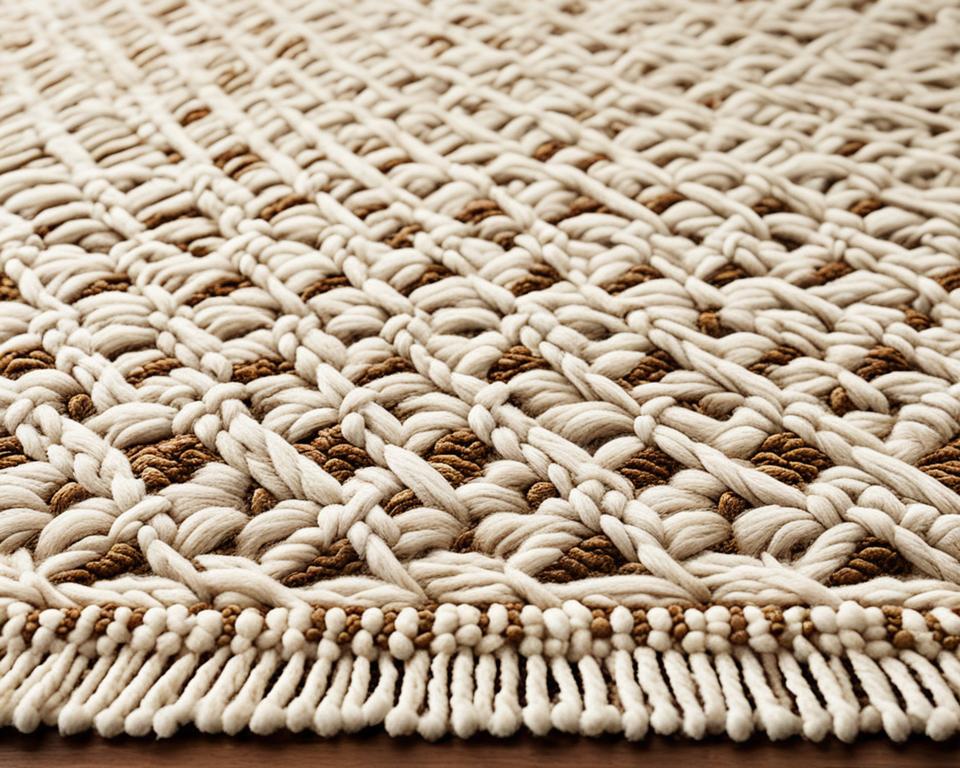
The Lowdown on Synthetics: Polypropylene and Nylon
Turning our attention to the realm of synthetic rug fibers, these materials have carved a niche for themselves in modern homes. Polypropylene area rugs provide a compelling mix of vibrancy and ease, resisting stains with fortitude and ready to brave both your living room gatherings and outdoor adventures. Yet, remember to keep them clear of any intense heat to prevent potential hazards. Lastly, there’s the ever-versatile nylon rug options, balancing cost-effectiveness with a wide array of design possibilities, despite being slightly less durable when juxtaposed with the robustness of polypropylene.
| Material | Durability | Maintenance | Ideal Usage |
|---|---|---|---|
| Wool | High | Professional cleaning recommended | Living rooms, bedrooms |
| Cotton | Medium | Machine washable | High-traffic areas, children’s rooms |
| Silk | Low to Medium | Professional cleaning required | Low-traffic zones, decorative purposes |
| Polypropylene | Medium to High | Easy to clean, keep away from heat | Indoor/Outdoor, dining areas |
| Nylon | Medium | Regular vacuuming, spot cleaning | Offices, playrooms |
As you contemplate the perfect addition to your home’s decor, consider how these natural and synthetic options align with your lifestyle and aesthetic preferences. With this knowledge in hand, you’re well-equipped to make an educated rug selection that fulfills your needs and complements your living space beautifully.
Is Durability or Style More Important in Choosing a Rug?
When you’re faced with the diverse selection of rug materials on the market, a key decision emerges: Should you lean towards rug material durability or succumb to the allure of stylish rug designs? This is not merely about aesthetics versus function; it addresses the core of what makes a rug suitable for your space. The natural elegance of wool and silk rugs encapsulates both robustness and refined style, yet these options might strain your budget.
Alternatively, synthetic materials such as nylon and polypropylene strike a compelling balance, boasting durability and an abundance of style options at a fraction of the cost. As you deliberate on choosing a rug, consider the room where the rug will reside. High foot traffic demands resilience, while lesser-used spaces might beckon for a touch of luxury regardless of the footfall.
Ultimately, the decision should harmonize with how you’ll enjoy the rug in your home—tipping the scale between enduring quality and visual impact.
- Wool Rugs: Excellent durability and a plush aesthetic. Ideal for those willing to invest in long-term quality.
- Silk Rugs: High-style quotient with gentle use. Suited for low-traffic areas where elegance is desired.
- Nylon Rugs: A practical compromise offering resilience for busier spaces without compromising on modern designs.
- Polypropylene Rugs: Weather-resistant and vibrant, a smart pick for areas that see both indoor life and outdoor elements.
Reflect on your lifestyle, the expected room activity, and personal aesthetics to ensure the rug you choose enhances your space practically and visually. Whether it’s the allure of natural textures or the practicality of synthetics, select a rug that aligns with both your life at home and your unique style narrative.
The Role of Rug Pile: Navigating Thickness and Texture
As you step into the diverse world of rug pile heights, it’s not just about choosing a rug that complements your room’s decor—it’s also about functionality and comfort. The height of a rug’s pile profoundly impacts its aesthetic, how it feels beneath your feet, and the ease with which you can maintain it, especially in areas that see a lot of action. Let’s break down the heights from thin to shag to find your ideal fit.
From Thin to Shag: Variety of Pile Heights Explored
Rug pile varies significantly from the sleek and durable thin pile rugs to the luxurious and tactile shag area rugs. Thin pile options are renowned for their versatility, acting as both practical floor coverings and distinctive wall hangings due to their lightweight nature. On the flip side, shag rugs are sought after for their comfort and softness, bringing a cozy dimension to any space they grace.
This variance in pile height offers a spectrum of textures and strengths for different environments within your home. Assess the level of traffic and the desired ambience to pick the perfect rug thickness—whether it’s the robust endurance of a low pile or the opulent coziness of a high-pile shag.
Choosing the Right Pile for High-Traffic Areas
In spaces that endure a significant amount of footfall, selecting high-traffic rug materials is essential. These need to be not just robust but also easy to care for. Low pile rugs are often touted as the most suitable for such conditions, boasting an ability to withstand wear while staying relatively simple to clean.
But what’s the secret to a high-traffic rug’s endurance? It lies in a well-considered blend of pile height and material choice. Rugs made with durable rug options, such as tightly woven synthetics or tough natural fibers, will sustain their look and feel over time, despite the bustle of busy feet.
By choosing wisely, you ensure stable footing, diminish the visibility of wear, and maintain a trouble-free upkeep schedule. Let’s explore some popular materials in a handy comparison table:
| Material | Pile Height | Durability | Best Used In |
|---|---|---|---|
| Wool | Low to Medium | Very High | Living areas, hallways |
| Cotton | Low | Medium | Kids’ rooms, kitchens |
| Nylon | Low to High | High | Offices, entryways |
| Polypropylene | Low to Medium | High | Patios, dining areas |
| Sisal | Low | High | Staircases, foyers |
By delving into the world of rug pile, you empower yourself to make informed choices that will ensure your rugs not only look fabulous but also stand the test of time. Whether you opt for a slender profile for heavy tread or a luscious shag for a private escape, your rugs can be a testament to both your style and practicality.
Decoding the Best Rug Materials for Allergy Sufferers
When you or someone in your home suffers from allergies, selecting the right rug becomes a pivotal part of maintaining a healthy living environment. As you dive into the world of allergy-friendly rug materials, understanding the hypoallergenic properties of certain fibers can make all the difference.
Hemp rugs are gaining popularity as an exceptional choice for allergy-friendly interiors. Recognized for their natural resistance to elements that typically trigger allergic reactions, such as dirt, dust, and water, these rugs cater superbly to areas with high foot traffic or furry family members. Wool rugs similarly offer a level of hypoallergenic comfort. Their natural antimicrobial qualities actively resist dust mites and bacteria, often found at the root of allergy flare-ups.
Choosing a rug material that doesn’t trap allergens is essential for creating a healthy space for allergy sufferers.
Beyond simply avoiding allergens, it’s crucial to think about maintenance. Rugs that are easy to clean will minimize the accumulation of allergens over time. Luckily, both wool and hemp tick this box and can be kept in top condition with relatively simple care routines.
Here’s a quick guide to help you choose a hypoallergenic rug that brightens up your space while keeping allergens at bay:
| Material | Allergy-Friendly Qualities | Maintenance | Recommended Areas |
|---|---|---|---|
| Hemp | Natural resistance to dirt, water, and allergens | Easy to clean, low maintenance | High-traffic spaces, bedrooms, play areas |
| Wool | Antimicrobial, dust mite and bacteria resistant | Occasional professional cleaning, regular vacuuming | Living rooms, bedrooms, areas with medium foot traffic |
Embracing natural rug benefits leads not only to a reduction in allergens but also contributes to a greener, eco-friendly home. Let the quest for the ideal cozy and clean rug be a breath of fresh air, ensuring everything from playtime on the floor to a casual walk across the room is safe and soothing for allergy sufferers.

In summary, hypoallergenic rugs like those made from hemp and wool can significantly enhance the quality of life for anyone dealing with allergies. By carefully considering materials that offer natural resistance to allergens and are easy to uphold, you can ensure your home remains both stylish and sensitively curated.
Affordable Luxury: Finding the Best Value in Rug Materials
Discovering a middle ground between sophistication and budget-friendliness is possible with the right rug material choices. In this foray into affordable luxury, you’ll learn that attainable opulence is not an oxymoron when it comes to decorating your floors. Whether you’re drawn to the natural appeal of jute and sisal or the sumptuous richness of silk and wool, there are options available that can satisfy both your aesthetic tastes and your wallet.
Evaluating Cost-Effective Natural Rug Options
If you’ve been enticed by the thought of adding affordable natural rugs to your home, you’re in luck. Jute and sisal offer an earthy charm with their unique woven texture, and when it comes to cost-effective rug choices, they lead the pack. While they require a bit more attention in their maintenance, their affordability makes them an attractive option for bringing warmth and an organic feel to any room.
Following close behind, cotton rugs provide a budget-friendly alternative to the more luxurious materials. Their enduring nature and the convenience of being machine-washable put them on the list of sensible yet comfortable selections for everyday living spaces.
High-End Elegance: Silk and Wool
When it comes to luxury rug materials, silk and wool are unparalleled in their class. Known for their wool rug elegance, woolen fibers offer a plushness underfoot that is second to none. Coupled with an impressive ability to resist soil and wear, wool rugs are a sound investment for those looking to splurge on a piece that will endure the test of time and style shifts.
On the other hand, silk area rugs epitomize extravagance with their lustrous finish and elaborate patterns. While these treasures do command a higher price and are best suited for areas where foot traffic is minimal, their majestic presence is often considered well worth the investment for the beauty they bestow upon a room.
| Material | Affordability | Durability | Style | Maintenance |
|---|---|---|---|---|
| Jute & Sisal | High | Good | Natural/Earthy | Requires careful cleaning |
| Cotton | High | Good | Casual/Varied | Machine-washable |
| Wool | Mid to High | Excellent | Elegant/Luxurious | Professional cleaning recommended |
| Silk | Higher | Good for low-traffic | Luxurious/Sophisticated | Professional cleaning required |
Your home is your sanctuary, and your choice in rug materials plays a pivotal role in setting its tone. Whether your heart desires the unrefined charm of sisal or the grandeur of silk, there are cost-effective rug choices and luxury rug materials to fit every budget and aesthetic. Revel in the tactile and visual delight that rugs offer and find that piece that speaks to your spirit without compromising your financial peace of mind.
Caring for Your Rugs: Best Practices for Rug Longevity
Preserving the vibrant appeal and structural integrity of your rugs requires a commitment to consistent care and appropriate cleaning practices. By following tailored rug care tips that cater to the specific materials of your rugs, you play an active role in maintaining rug quality. Fibers like polyester and olefin are heralded for easy maintenance, while natural textures like wool and silk demand a more nuanced approach to ensure their luxurious appeal is never compromised.
Whether you’re refreshing a synthetic runner or a delicate heirloom piece, the convergence of rug cleaning practices and daily upkeep converge to safeguard your rugs against the toll of time and traffic. Here’s a table highlighting the crux of caring for various rug materials:
| Material | Stain Resistance | Cleaning Recommendation | Regular Upkeep |
|---|---|---|---|
| Polyester/Olefin | High | Use household cleaners; Easy to clean | Vacuuming; Quick spill response |
| Wool | Moderate | Professional cleaning advised | Vacuum frequently; Address spills immediately |
| Silk | Low | Professional cleaning mandatory | Gentle vacuuming; Avoid high-traffic placement |
It’s essential to vacuum regularly to prevent the embedding of dirt and debris, which can damage rug fibers over time. For quick spill control, blot—don’t rub—to absorb the spill and keep the affliction superficial. Given silk’s exquisite nature, hastily dealing with wet spills can mean the difference between a minor blip and a permanent blemish.
When it comes to professional cleaning, consider it not as an expense but as an investment in your rug’s longevity. While natural fibers like wool and silk might spike the bill, their enduring elegance affirms their worthy place in your home.
A stitch in time saves nine, and even more so, a cleaning in time maintains a rug’s divine.
The wisdom in caring for your rugs lies not only in responding to accidents but in forestalling them. Employing pads to cushion and stabilize, rotating rugs to distribute wear, and limiting exposure to direct sunlight are proactive steps towards maintaining rug quality. As seemingly mundane as these tasks may be, they compound to keep the fabric of your rugs—both figuratively and literally—intact for generations.
By embracing these best practices, your rugs will continue to tell a story—a narrative woven not just into their threads but into the very fabric of your home. Embody these practices and watch your rugs maintain their charisma and character. After all, a well-cared-for rug is not only a foundation for your furniture but a tapestry of life lived and shared.
Making a Style Statement with Unique Rug Materials
When it comes to personalizing your home, nothing speaks louder than the treasures you choose to adorn your floors with. Rugs, steeped in tradition and modernity, now offer a medium for unrestrained expression through artistic rug materials and unique rug designs. These pieces are no longer mere accessories but pivotal focal points that can define and transform any space.
Rugs as Art: Using Unusual Materials to Create Focal Points
Adeptly positioned rugs crafted from unconventional materials can anchor your room’s decor, providing both a narrative and a visual spectacle. Something as robust and eco-friendly as recycled P.E.T becomes not just a talking point for its resilience but also reflects a commitment to sustainability. The chic allure of cowhide simultaneously infuses a room with both contemporary grandeur and rustic charm, while the luxurious softness of sheepskin lends an air of opulence and tactile pleasure.
Integrating Texture and Color with Innovative Fabrics
In the pursuit of a balanced aesthetic, incorporating textured rug materials and colorful rug fabrics can markedly elevate the ambiance of a living space. For instance, the indulgent texture of faux fur provides a bold statement piece that is as eye-catching as it is pleasant to the touch. Similarly, the vibrant hues and versatile designs of polypropylene rugs offer a way to experiment with color without sacrificing practicality, as they stand strong against the demands of daily life. The process of selecting the right fabric is pivotal in establishing not just a mood but also in cementing your room as a clear reflection of your personal style.
Let’s examine some materials that may inspire your next decor update:
| Material | Texture | Color Range | Style Statement |
|---|---|---|---|
| Recycled P.E.T | Varied | Wide | Eco-Chic |
| Sheepskin | Soft & Plush | Natural Tones | Luxurious Comfort |
| Cowhide | Smooth with Natural Markings | Earthy to Metallic | Modern Rusticity |
| Faux Fur | Thick & Fluffy | Vibrant | Edgy Elegance |
| Polypropylene | Diverse & Durable | Energetic Spectrum | Functional Vibrance |
Your home is a canvas awaiting your signature touch; why not let these unique rug designs serve as that brushstroke of genius? As you weave together texture, color, and material, your home transforms into a space that not only accommodates your lifestyle but also eloquently communicates your distinct taste and personality.
Conclusion
Your journey through the expansive world of rug materials has been rich with options, each with its own charm and set of benefits. We’ve explored the enduring elegance of natural fibers like wool and silk that impart warmth and sophistication. We’ve navigated through the practical tenacity of synthetics such as nylon and polypropylene, embodying modern resilience. Now, as we stand at the rug selection conclusion, it’s clear that your ideal rug material choice will blend seamlessly with your lifestyle, reflecting both your personality and the functional needs of your space.
Whether you are drawn to the plush comfort of wool for your quiet reading nook, the easy-care attributes of synthetics for a bustling family room, or the hypoallergenic qualities of hemp for a nurturing nursery, the perfect rug material is out there. Each fiber tells a story, and yours should resonate with the way you live and the home you love. Balancing durability with design, your rug becomes more than an accessory—it’s a foundational statement of your aesthetic and a companion to your home’s daily rhythm.
In the vast tapestry of choices, remember that beauty and practicality are not mutually exclusive. The finest rug material for you is the one that meets your day-to-day demands while elevating the atmosphere of your home. So, embrace the variety, consider the essentials of maintenance and feel, and let your discerning eye lead you to a selection that fulfills your aspirations for comfort, style, and quality. Let the rug you choose be a reflection of your unique story, a harmonious thread in the fabric of your dwelling.
FAQ
What is the best rug material for durability and comfort?
Wool is generally considered to be the best rug material for an optimal balance of durability and comfort. It’s naturally resilient to stains and foot traffic and provides a luxurious feel underfoot, making it ideal for many homes.
Which rug material is ideal for high-traffic areas?
For high-traffic areas, look for low pile rugs made from durable fibers like nylon or polypropylene. These materials resist wear and are easy to clean, suited to spaces with lots of footfall.
How do I choose a rug that contributes to a cozy home vibe?
For a cozy home feel, select rugs with a soft texture and warm material such as wool or cotton. Shag rugs and those with a thick pile also add a plush, comfortable touch to your space.
What are the benefits of natural rug fibers like wool, cotton, and silk?
Natural rug fibers offer varying benefits: wool is durable and stain-resistant, cotton is soft and often machine-washable, and silk provides a luxurious look and feel, though it’s best for low-traffic areas.
Which rug materials are best for outdoor spaces?
Polypropylene area rugs are an excellent choice for outdoor spaces due to their resistance to stains, moisture, and potential fading from sunlight exposure. They are durable and easy to clean, making them ideal for outdoor use.
Are there allergy-friendly rug options?
Yes, there are allergy-friendly options such as wool, which is naturally hypoallergenic and resists dust mites and bacteria. Hemp and sisal are also good choices as they don’t trap allergens easily.
Can you have luxury rug materials without a high price tag?
Absolutely. Cotton and jute offer luxurious texture and style at a more affordable price than traditional luxury materials like silk or high-grade wool.
What are some unique rug materials for making a style statement?
Unconventional materials like recycled P.E.T, sheepskin, cowhide, and even faux fur can serve as statement pieces that bring distinctive style and texture to your living space.
How do I maintain the quality of my rug over time?
Regular vacuuming, immediate attention to spills and stains, and professional cleaning as needed can help maintain your rug’s quality. Follow care instructions specific to your rug’s material for best results.
Is it necessary to choose between style and durability when selecting a rug material?
Not necessarily. Many rug materials like those made from synthetic fibers offer both durability and style, while certain natural fibers like wool can also serve a dual purpose. Consider your specific needs and desires to find the right balance.
